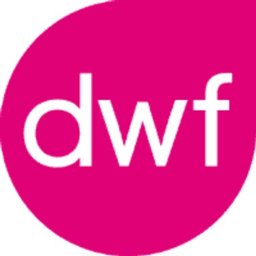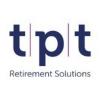Legal Applications Architect
Job Description
Why join us?:
At DWF, we're not just keeping up with the future of Legal tech -- we're shaping it. As an early adopter of cutting-edge AI tools like Co-pilot and Legora, and a proud Microsoft Frontier Client, we're redefining what's possible in the legal sector.
The Legal Applications Architect will lead the consolidation of our application portfolio, creating an executable applications migration path of our current enterprise applications to our SaaS and Azure Cloud future-state.
Following multiple acquisitions, our company has a complex landscape with overlapping functions. The Architect will analyse the current environment, define a plan for system integration, and steer engineering teams through implementation.
This high-impact role requires broad technical expertise and strategic leadership to unify our technology and align it with business goals. You will collaborate with the IT Infrastructure & Operations Director, and the Head of Security to ensure the applications, infrastructure and security roadmaps are in alignment with a clear path to consolidation.
Join a team that's disrupting tradition with innovation and leading the way in transforming how Legal services are delivered.
Interview with Jon Grainger - Computer Weekly: Interview: Jon Grainger, CTO, DWF | Computer Weekly
Partnership with Legora Article: DWF agrees partnership with Legora to deliver AI-powered legal operations | DWF Group
MS CoPilot Article: DWF boosts productivity and client experience with Microsoft 365 Copilot | Microsoft Customer Stories
Responsibilities:
Application Portfolio Mapping - responsible for cataloguing all enterprise applications, documenting each system's purpose, capabilities, technology stack, ownership, and interdependencies. Identify areas of overlap or redundancy in functionality, especially those stemming from past acquisitions.
Application Portfolio Analysis & Planning - use data driven analysis of the application portfolio to inform decision-making for consolidation. Prioritise which applications should be invested in, which should be replaced or retired, and in what order.
Consolidation Roadmap Development - responsible for a structured engineering roadmap to systematically consolidate and streamline the application portfolio. Outline the sequence of projects or stages that will transition the organisation from the current state to the target state. Align the roadmap closely with business priorities and ensure stakeholder engagement.
Target Architecture Design - design and define an optimised landscape of core systems that effectively and efficiently support all business functions without unnecessary duplication. Ensure the target architecture is scalable, secure, and resilient, leveraging modern approaches such as cloud-native services, microservices or service-oriented architecture and a well-structured data architecture.
Integration & Migration Planning - plan and lead the integration of systems and data migration efforts required by the consolidation roadmap. Develop migration strategies for moving users and data from legacy systems to their new destinations.
Technology Evaluation & Standardisation - lead the evaluation and recommend the tools, platforms, and technologies that will become part of the consolidated application environment, ensuring technology standardisation.
Architectural Governance- establish and govern the architecture standards and best practices. Ensure that security, compliance, and data privacy requirements are embedded in all designs and plans.
Project Leadership & Execution Support - provide technical leadership and support during the execution of consolidation projects. Act as a technical advisor and decision-maker for architecture-related questions or issues that arise.
Progress Monitoring & Communication - track progress toward the consolidated application architecture. Define and monitor key metrics to measure success and impact.
What will help you succeed in this role? :
Essential
Bachelor's degree in Computer Science, Information Systems, or relevant experience. Previous experience within the Legal industry/Legal Applications. Demonstrable experience in software architecture or solution architecture roles, including significant time as an Application Architect overseeing large-scale system portfolios. Experience in leading application rationalisation or IT modernisation initiatives in complex organisations is essential. Deep understanding of application portfolio management and consolidation strategies. Strong experience in Azure.
Desirable
Experience with the following applications is highly beneficial: Sharedo, HubSpot, SnapLogic or Legora. Relevant industry certifications such as TOGAF or Zachman (Enterprise Architecture frameworks), Certified Cloud Architect credentials (Azure Solutions Architect Expert, etc.)
What we offer?:
We are committed to ensuring that each member of our team feels valued and duly rewarded during their time at DWF.
We are an equal opportunities employer that celebrates diversity and we are committed to creating an inclusive environment for all. We aim to create a positive experience for all candidates and offer any adjustments or additional support needed. If you're excited about the opportunity but your experience doesn't align perfectly with all the requirements, please apply anyway. You may be the right candidate for the role or others across the wider team.
About us:
DWF is a leading global provider of integrated legal and business services. Our approach delivers efficiency, price certainty and transparency for our clients across the world without compromising on quality or service. Our purpose is to deliver positive outcomes with our colleagues, clients and communities and we foster a culture that places our colleagues at the centre of all that we do.
MNCJobs.co.uk will not be responsible for any payment made to a third-party. All Terms of Use are applicable.
Job Detail
-
Job IdJD3398559
-
IndustryNot mentioned
-
Total Positions1
-
Job Type:Full Time
-
Salary:Not mentioned
-
Employment StatusFull Time
-
Job LocationManchester, ENG, GB, United Kingdom
-
EducationNot mentioned




